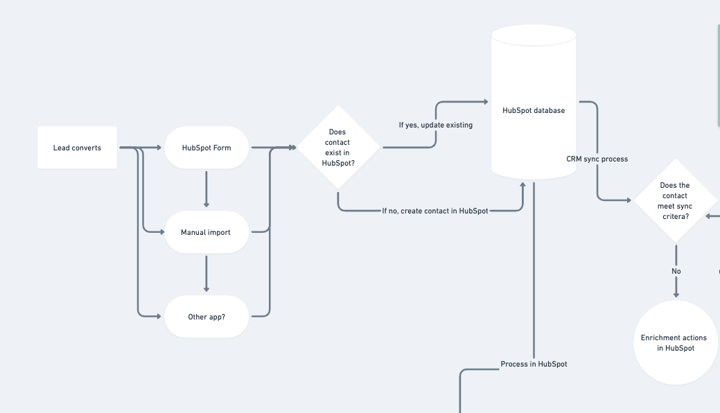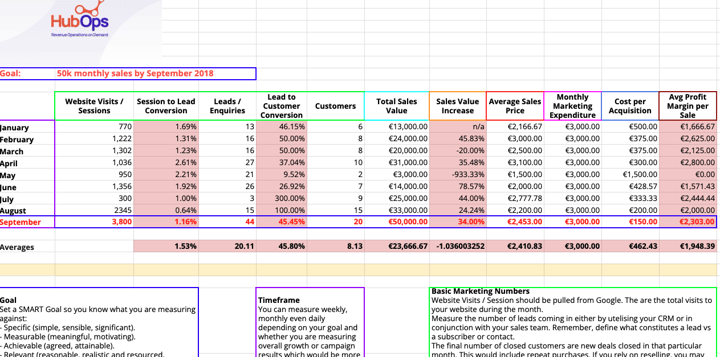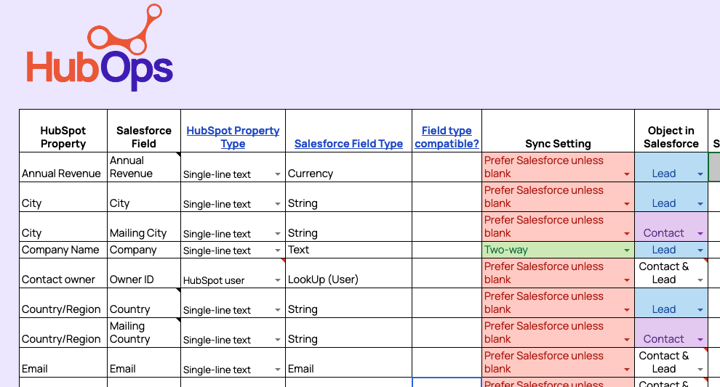Why a Cohesive Platform is Key to Closed Loop Reporting: from a Revenue Operations perspective
As a revenue operations specialist, I have seen firsthand the importance of closed-loop reporting in driving business success. closed-loop reporting is the process of tracking a lead from the moment they enter your sales funnel to the point of conversion, and then using that data to optimize your sales and marketing efforts. It's a powerful tool that can help you identify what's working and what's not, and make data-driven decisions to improve your bottom line.
However, closed-loop reporting can be a challenge, especially if you're working with a complex tech stack. When you have multiple systems and integrations in place, it can be difficult to get a complete picture of your customer journey. That's why I believe that building your commercial tech stack in a cohesive platform with as few integrations and points of friction as possible is the key to successful closed-loop reporting.
In this blog post, I'll explore why this is the case, and provide some tips for building a cohesive tech stack that will make closed-loop reporting easier and more effective.
Why Cohesion Matters
The first reason why building a cohesive tech stack is important for closed-loop reporting is that it allows you to get a complete view of your customer journey. When you have all of your data in one place, you can see how your leads are interacting with your website, your marketing campaigns, and your sales team. This gives you a more accurate picture of what's working and what's not, and allows you to make data-driven decisions to improve your sales and marketing efforts.
In addition, a cohesive tech stack can help you avoid data silos. When you have multiple systems and integrations in place, it's easy for data to get stuck in one system and not be shared with the others. This can lead to incomplete or inaccurate data, which can make it difficult to make informed decisions. By building a cohesive tech stack, you can ensure that all of your data is shared across your systems, giving you a more complete view of your customer journey.
Finally, a cohesive tech stack can help you save time and money. When you have multiple systems and integrations in place, it can be time-consuming and expensive to maintain them all. By consolidating your tech stack into a cohesive platform, you can reduce the number of systems you need to maintain, which can save you time and money in the long run.
Tips for Building a Cohesive Tech Stack
Now that we've explored why building a cohesive tech stack is important for closed-loop reporting, let's look at some tips for building a tech stack that is as cohesive as possible.
1. Start with a clear understanding of your business needs
Before you start building your tech stack, it's important to have a clear understanding of your business needs. What are your goals? What are your pain points? What data do you need to track in order to make informed decisions? By starting with a clear understanding of your business needs, you can ensure that you're building a tech stack that will meet those needs.
2. Choose a platform that can integrate with your existing systems
When choosing a platform for your tech stack, it's important to choose one that can integrate with your existing systems. This will help you avoid data silos and ensure that all of your data is shared across your systems. Look for a platform that has a robust API and can integrate with the systems you're already using.
3. Minimize the number of integrations
While it's important to choose a platform that can integrate with your existing systems, it's also important to minimize the number of integrations you have. The more integrations you have, the more points of friction you have in your tech stack. This can make it more difficult to get a complete view of your customer journey. Try to consolidate your systems as much as possible, and choose a platform that can handle multiple functions.
Despite leveraging native integrations, maintaining integrations between systems can still present challenges. Complex tech stacks with multiple systems and integrations can make it difficult to get a complete picture of the customer journey and can lead to data silos. To combat this, building a cohesive tech stack with as few integrations and points of friction as possible is key. By doing this, businesses can obtain a more accurate picture of what's working and what's not, make data-driven decisions to improve sales and marketing efforts, and save time and money. However, building a cohesive tech stack requires a clear understanding of business needs, choosing a platform that integrates with existing systems, minimizing the number of integrations, using automation to streamline processes, and investing in training and support. Even if it's not possible to fully close the loop on customer reporting due to finicky integrations, businesses can still manage closed-loop reporting manually with the help of a free template.
4. Use automation to streamline your processes
Automation can be a powerful tool for streamlining your processes and reducing the number of manual tasks you need to perform. Look for a platform that has robust automation capabilities, and use them to automate tasks like lead scoring, lead nurturing, and data entry.
When it comes to marketing, there are a number of tasks that can be automated to streamline processes and save time. One of the most commonly automated tasks is lead scoring. By using automation to score leads based on their behavior and engagement with your brand, you can quickly identify which leads are most likely to convert and focus your efforts on those leads. Another commonly automated task is lead nurturing. By using automation to send targeted, personalized messages to leads at different stages of the funnel, you can keep them engaged and moving closer to a conversion. Finally, data entry is another task that can be automated to save time and reduce errors. By using automation to enter data from one system into another, you can ensure that your data is accurate and up-to-date without the need for manual entry. By automating these tasks and others, you can free up time to focus on more strategic initiatives and improve your overall marketing effectiveness.
When it comes to sales and marketing, automation can be a game-changer. By automating repetitive tasks, businesses can free up time to focus on more strategic initiatives and improve their overall effectiveness. Some of the most commonly automated sales tasks include lead scoring, lead nurturing, and data entry. By using automation to score leads based on their behavior and engagement with your brand, you can quickly identify which leads are most likely to convert and focus your efforts on those leads. Similarly, by using automation to send targeted, personalized messages to leads at different stages of the funnel, you can keep them engaged and moving closer to a conversion. Finally, by using automation to enter data from one system into another, you can ensure that your data is accurate and up-to-date without the need for manual entry. While automation can be a powerful tool, it's important to remember that it's not a one-size-fits-all solution. Businesses need to invest in training and support for their tech stack to ensure that they're using automation effectively and getting the most out of their closed-loop reporting efforts.
5. Invest in training and support
Finally, it's important to invest in training and support for your tech stack. Make sure your team is trained on how to use the platform effectively and provide ongoing support to help them troubleshoot any issues that arise. This will help ensure that your tech stack is being used to its full potential, and that you're getting the most out of your closed-loop reporting efforts.
HubSpot as your customer-centric platform
One platform that can replace multiple systems in your tech stack is HubSpot. This all-in-one customer-centric platform combines a CMS system, marketing automation tools, lead generation, CRM, sales tools, and customer service software.
By consolidating all of these tools into one platform, you can reduce the number of integrations and points of friction in your tech stack. This ultimately leads to a more cohesive and accurate view of your customer journey, making closed-loop reporting easier and more effective. Additionally, HubSpot offers robust automation capabilities that can streamline your processes and save time. While investing in a new platform may seem daunting, HubSpot's training and support resources make it a worthwhile investment for any business looking to improve its closed-loop reporting efforts.
Not quite ready to invest in new tooling?
While building a cohesive tech stack is crucial for effective closed-loop reporting, sometimes it may make sense to continue using a less than ideal tech stack with finicky integrations. Even when you know that you can't fully close the loop on your customer reporting. For example, if you're working with a legacy system that can't be easily integrated with your other systems, it may be more cost-effective to continue using that system rather than investing in a new one.
While this approach can lead to incomplete or inaccurate data, which can make it difficult to make informed decisions, this might be the case for now. If you find yourself in that place, you can, for now, manage your closed-loop reporting manually with this free template:
Random Fact: Did you know that the term "closed-loop reporting" comes from the concept of a closed-loop control system, which is a system that uses feedback to control its output?






